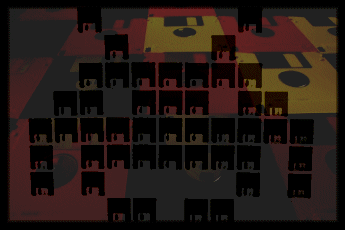 |
VINTAGE MS-DOS GAMES
 elcome to my vast collection of MS-DOS Floppy Disk Games from way back in the day before gaming companies became like movie companies. Most of these
games were created by just a handful of people. These were my pre-teen years mostly, except for the thousands of games within the bottom link I never even heard of that I've yet to play most of. elcome to my vast collection of MS-DOS Floppy Disk Games from way back in the day before gaming companies became like movie companies. Most of these
games were created by just a handful of people. These were my pre-teen years mostly, except for the thousands of games within the bottom link I never even heard of that I've yet to play most of.
In order to play these on newer systems, you will need a DOS Emulator. I recommend DosBox. After that, if you would like a cool program for windows that loads each game
with its requirements and represents each game by screenshot, try D-Fend Reloaded. I hope you enjoy this retro gaming experience as much as I have. These
games all came from a torrent except for the few I added from my collection that weren't included.
|
ABUSE
|
|
Abuse is a run and gun computer game developed by Crack dot Com, and published by Origin Systems/Electronic Arts. It was released in 1996, and runs on DOS and Linux operating systems. An improved port of the game was released for Mac OS by Bungie Studios and for the Acorn Archimedes by R-Comp Interactive. The game has been in the public domain since the late 1990s.
The protagonist of the game, Nick Vrenna, has been unjustly incarcerated in a prison where the staff are performing unethical medical experiments upon the inmates. A prison riot occurs and an experiment goes horribly wrong. The people inside the prison - except for Nick, who seems to be immune - get infected with a substance called Abuse that transforms them into monsters. Nick takes a laser gun and goes on to single-handedly destroy all mutants, stop the substance from spreading further, and escape from the prison complex.
DOWNLOAD
|
ABYSS OF PANDEMONIUM FOR QUAKE
|
|
Abyss of Pandemonium is a third-party, originally shareware and then commercial add-on for Quake that features a new story, new weapons and monsters. The game also came with its own tweaks of the multiplayer mode.
The playable demo contains one single-player level and one multiplayer level. It requires the registered version of Quake or a libre dataset replacement and a Quake engine port to run.
In 2004, the creators released the deathmatch module of the game (without maps) as freeware, and later, fans picked up the game and made a free full version 2.0 with tweaks and enhancements (please see the links section below). This version still needs the original Quake to play.
DOWNLOAD
|
ALIEN CARNAGE
|
|
Alien Carnage, also known as Halloween Harry, is a side-scrolling platform game written by SubZero Software and distributed by Apogee Software. The cartoon-style game features agent Halloween Harry who has to save the world from aliens who want to take over control of Earth by turning its population into green-skinned zombies. Some of the enemies reference Aliens, Gremlins, and Elvis Presley. Harry is helped by controller Diane, who gives him information via a video link. The game features 256 colour VGA graphics and background music in a format similar to MOD.
In May 2007, John Passfield and 3D Realms released Alien Carnage as freeware.
The game was originally titled Halloween Harry and was released under this title for the two versions. After v1.2, Apogee suggested to the developers that the title should be changed because it might be viewed as a seasonal Halloween-themed game, limiting sales during the rest of the year. They proposed Alien Carnage, and it was re-released as AC v1.0 in 94. Along with the name change, episodes 1 and 3 were switched, which meant that half of the game could be played for free.
DOWNLOAD
|
ANCIENTS 1: DEATHWATCH
BIO MENACE FULL VERSION IS FREEWARE
|
|
Bio Menace is a 2D, side-scrolling, platform game both developed and published by Apogee Software in 1993 for MS-DOS. It was built on a licensed version of id Software's Commander Keen game engine, and was known as Bio Hazard during production. Apart from the engine, all in-game content was created by the game's designer, Jim Norwood.
The player controls the protagonist, Snake Logan, a top CIA operative. Upon receiving reports of Metro City being invaded by mutants, Snake is ordered to fly recon over the city. However, after crash landing in Metro City, Snake is forced to complete his mission on foot.
The game has three episodes, the first of which was released as shareware, the rest being available commercially. The episodes are:
Dr. Mangle's Lab, The Hidden Lab, and Master Cain.
Apogee released the game as freeware on December 23, 2005 as a "Christmas present" and the full game can be downloaded from the Apogee website.
DOWNLOAD
|
BLAKE STONE SERIES

 
 
 
|
Blake Stone: Aliens of Gold is a first-person shooter computer game created by JAM Productions and published by Apogee Software. It uses the Wolfenstein 3D game engine to render graphics in first person, while adding many features. The shareware version of the game was released December 3, 1993. The registered version of Blake Stone shipped with a comic book, called a "Blake Stone Adventure". To date it is the only title in the company's product line to do so. In 1994, a sequel called Blake Stone: Planet Strike was released. It follows up where Aliens of Gold leaves off. The gameplay of Aliens of Gold is very similar to Wolfenstein 3D. Playable areas are single-leveled, with orthogonal walls and textured floors and ceilings. Special level features include: locked doors which can be opened by four types of colored keys (gold, green, yellow, blue), one-way doors, secret rooms accessible through pushable wall blocks, and teleports that instantly take the player into another location within the level.
DOWNLOAD
Blake Stone: Planet Strike is the sequel to the computer game Blake Stone: Aliens of Gold, made by JAM Productions and released on October 28, 1994. It featured new enemies (in reality, they were the three original guards, recolored to look more alien), weapons and levels. In contrast to Aliens of Gold, in which the player has to retrieve the red key to unlock the next floor in the elevator, the player advances levels in Planet Strike by way of the "Security Cube." The player must first locate a fission detonator, which is picked up. Then the player must locate the Security Cube itself and drop/arm the detonator. The player then must move quickly out of the way to avoid being damaged and Once the Security Cube is destroyed, the player can return to the transporter to access the next level.
NOT AVAILABLE HERE
|
CAPTAIN COMIC

 
 
|
The Adventures of Captain Comic (or just Captain Comic) is a classic 1988 MS-DOS platform game which is known for being one of the first side-scrolling games made for the IBM PC. It was completely created by Michael Denio. The PC version of the game was distributed as shareware. Later a version for the NES was published by Color Dreams as an unlicensed title. An unofficial conversion for the SAM Coupé also exists. It was also cloned as "Pioneer Xenia" in 1990 by a team of Ukrainian programmers.
In the game, the player takes control of Captain Comic, who is on a mission to the planet Tambi, to recover three treasures stolen from the planet Omsoc. Its author, Michael Denio, writes in the introduction to the game's manual:
The Adventures of Captain Comic started out as an experiment to test the viability of two theories, the first as to whether a real arcade type game can be done on a standard IBM PC with an EGA card, and secondly, given the first can be done, if it is possible to make any money doing it. Well, I've come to a conclusion on the second point, but I'll let you judge the first point for yourself.
The game was given away for free (later, used as an incentive for the commercial sequel, Captain Comic II: Fractured Reality). Although neither the original, nor its sequel were commercial successes, Captain Comic is best-known for its historical significance to classic PC games.
The theme song for Captain Comic was traditionally a rendition of the United States Marine Corps Hymn. The song was changed in Version 5 (the final version of the game, released in 1991).
DOWNLOAD GAME
Captain Comic 2: Fractured Reality is the 1990 sequel to the classic DOS platform game, The Adventures of Captain Comic. The game was created by the same author as the original, Michael Denio, and published by ComputerEasy.
The game was never as well-known as its predecessor, despite containing numerous improvements and new features:
Save/continue-game feature
Hundreds of objects to discover
Multiple hidden rooms and bonus objects
Four-way scrolling playfield with more color and graphics
Many new tools for Comic to use
Non-player characters to interact with
A much more involved storyline
The ability to swim, fly, ride a mine car and a sled
The game is also reportedly three times the size of the original
Unlike the original (which was given away free), the game was sold commercially, which explains its lesser popularity. However, more recently it has been made available free.
Captain Comic II is a platform game and like its predecessor has the concepts of shield points (health), lives, a score, items, enemies, zones and objectives.
The primary health indicator is the shield. Once the shield points are exhausted by coming into contact with enemy units and then he is struck again, Comic loses a life. Additionally, if Comic falls off the bottom of a screen a life is lost. If Comic finds a bonus shield it will restore the points to maximum, or add the shield to his inventory for later use if already at full. The game is over when Comic loses all of his lives (or completes the main objective of the game).
NO DOWNLOAD AVAILABLE HERE
|
CD-MAN
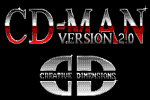 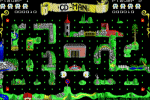
|
Pac-man, an arcade classic finds a new form in this very cute clone. CD-Man features 5 different worlds to pass each having nicely-drawn graphics in high-res EGA mode and therefore a new character, "The Snoofer" which was not available in version 1.5 (instead of it you were playing with your old pal).
Created by two Swedish authors, Atilla Biro and Anders Moree.
DOWNLOAD CD-MAN
|
CHEX QUEST
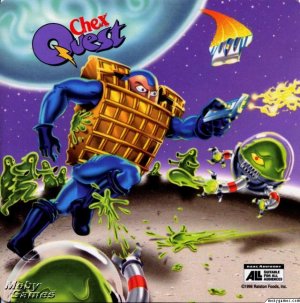
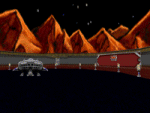 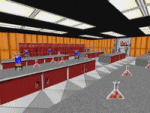
|
Chex Quest is a total conversion of the computer game Doom (specifically Ultimate Doom). This game, notable for being the first video game ever to be included in cereal boxes as a prize, was found in boxes of Chex cereal in 1996. In addition to the original game, Digital Café later made a sequel to Chex Quest called Chex Quest 2, which was only available for download on the Internet. Eventually the promotion ended and the game's availability effectively stalled until it was posted for download on fan pages several years later. In September 2008, a second sequel, Chex Quest 3 was developed and released as a service to fans by former Digital Café members Charles Jacobi (art director and lead artist) and Scott Holman (programmer).
Chex Quest won both the Golden Reggie Award for Promotional Achievement and the Silver EFFIE Award for Advertising Effectiveness.
mods forums chex wikia chex 95 chex trek return of flemoids cheats
DOWNLOAD CHEX QUEST
Chex Quest 2 was made in 1997, a year after Chex Quest. You could only find this on chexquest.com when it was first released. It is not there any more, but you can find it on many Chex Quest fan sites.
Chex Quest 2 starts with the Chex Warrior returning to his home planet and landing in Chex City. As he lands he notes with a little apprehension that everything is quiet... Too quiet. As he leaves his ship, it becomes apparent that the Flemoid threat has reached his homeworld! Grabbing his trusty zorcher again, he races to the rescue of his beloved home. Battling through a spaceport, a cinema, a museum, and through the city until he reaches the sewers, where he faces his biggest challenge yet: The Maximus! Download it now, and see if you can handle the heat!
DOWNLOAD CHEX QUEST 2
Chex Quest 3 is the newest edition to Chex Quest, created by original Digital Café team member Charles Jacobi. Only one map was planned originally, but Charles got more into making his map, and he announced in June 2008 that he was creating a full sequel, with much cheering by fans. It was released in September that year.
|
COMMANDER KEEN: INVASION OF THE VORTICONS
COMMANDER KEEN: KEEN DREAMS
 
|
"Keen Dreams" aka "The Lost Episode" (published as shareware by Softdisk)
After refusing to eat his vegetables, Billy is sent to bed by his parents. He falls asleep, only to awaken in a strange vegetable kingdom led by the evil potato king Boobus Tuber, who has imprisoned other sleeping children there. In the dream world, Keen does not have his trademark raygun and pogo stick, but has to defend himself with "Flower Power" seeds that temporarily turn enemies into flowers.
DOWNLOAD INTERLUDE
|
COMMANDER KEEN: GOODBYE GALAXY
 
 
|
"Secret of the Oracle" Keen's newly finished homemade faster-than-light radio picks up a plot by the Shikadi to destroy the galaxy. He rushes to the planet Gnosticus IV to consult the Keepers of the Oracle, but discovers that they have been taken captive. Thus, the gameplay centers on Keen finding and rescuing the eight elders. This episode features huge levels and a wide variety of enemies, such as rocks that only move when your back is turned, and modified game mechanics. The game also features a mini-game called "Paddle War", a remake of the video game Pong, though this version is horizontal instead of vertical.
"The Armageddon Machine" After getting information from the Oracle, Keen lands on a massive Shikadi space station, the Omegamatic, nicknamed the Armageddon Machine, and seeks out the mysterious Grand Intellect. The gameplay centers on Keen advancing through the Omegamatic to deactivate it.
DOWNLOAD EPISODE 4 | DOWNLOAD EPISODE 5
|
COMMANDER KEEN: ALIENS ATE MY BABYSITTER
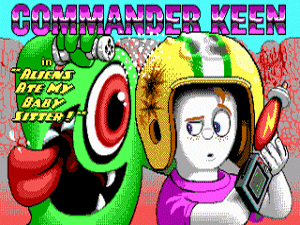
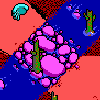 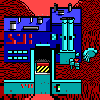 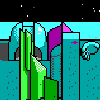
|
Commander Keen 6: Aliens Ate My Babysitter! is set some time after Keen 5. The events of Keen 6 were a diversion from the main plot of the rest of the series. This is in quite a literal sense, as the abduction of Molly McMire by the Bloogs really was a distraction set up by Mortimer McMire to buy himself time which he would use to advance his malevolent scheme to destroy the universe.
McMire's plan was simple: create a situation which Commander Keen would have to respond to, but, should Keen succeed, would not provide any setbacks for himself. And he had the perfect means of doing so. The Bloogs, a species of rather dim-witted and hunger-driven aliens from Fribbulus Xax, were very easy to convince. All McMire had to do was give them the location of the Stupendous Sandwich of Chungella IV, and they would do what he asked. It was then that the Bloogs set out to abduct Keen's baby-sitter and Mortimer's sister, Molly. (Whether they all planned to share either the sandwich or Molly for dinner is unclear; most likely is that the Bloogs did not think it through at all.)
The timing and mechanics of the abduction were carried out perfectly. Molly was taken away by the Bloogs while she was baby-sitting Keen. When Keen ran outside to see what had happened, he found a note which told where Molly had been taken, and further elaborated that she was to be eaten by the Bloogs. Keen, as McMire had expected, went to the aid of his baby-sitter.
Rescuing Molly proved to be a major challenge. Fribbulus Xax was well-populated by all manner of hazardous creatures, including, of course, the Bloogs themselves. Still, Mortimer, never one to make things too easy, made sure the planet was extra-ready for Keen's arrival. With any luck, this little diversion would kill Keen.
DOWNLOAD
|
THERE'S ALSO A KEEN WIKI
CORNCOB 3-D (OTHER WORLDS CAMPAIGN)
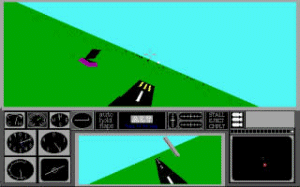
|
Corncob 3D was Published by MVP software and developed by Pie in the Sky Software in 1992.
The game takes place in an alternate history where World War II never happened. But all is not well. Instead of fighting Nazis the world must deal with an even more deadly enemy… aliens. You take the controls of the Corsair Corncob and fight off the invaders in this sci-fi air-combat simulation.
DOWNLOAD (THAT I BOUGHT BACK IN THE DAY)
Corncob 3D is one of the few shareware flight simulators for DOS. The premise is a bit strange, though. Adolf Hitler's demise at a young age prevented World War II, but aliens invaded in 1938 and colonized the planet at will until 1949. The world has finally coordinated a plan to attack the invaders on all fronts, and you must fly missions or all will be lost. Your airplane is equipped with guns, missiles and bombs, and you can get out of your plane and navigate on foot with just a pistol. EGA graphics mean that the graphics aren't very realistic, but a lot of people enjoyed this game.
|
CORRIDOR 7
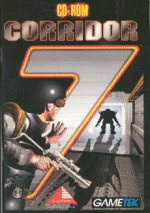 

|
Corridor 7: Alien Invasion is a first-person shooter computer game developed and published by Capstone Software. It was widely ignored for its outdated Wolfenstein 3D engine, which was technologically surpassed by Doom at the time. A sequel Corridor 8: Galactic Wars was planned, but was cancelled.
"Earth's fighting days were believed to be over. Most of America's military funds were now being directed towards research and space exploration. In 2012, Dr. Donald Fox, a U.S. exobiologist on one of the first manned missions to Mars returned with a metallic object taken from an area near one of Mars' curious face-like formations. It was the first hard proof that life existed outside Earth's solar-system. Scientists were elated, but the government, ever so cautious, removed the artifact to an underground research facility called Delta Base. Delta Base, a small weapons development and research centre located in the Nevada desert, is the only facility equipped to test such an object. The object was taken to the lowest level, a maze-like series of hallways and test chambers, to the laboratory known as Corridor 7.
The age of the object was impossible to determine. Most scientists believed it to be ancient, but it showed no traces of its age and its surface could not be sampled, even at a molecular level. The standard battery of tests were issued. In the back of the chamber the object was subjected to varying levels and types of radiation. During the Gamma phase of tests, the object began to change..."
The source files to Corridor 8 were made available by a fan, who hosted the files on his site.
DOWNLOAD
|
DOOM
|
|
Doom is a 1993 first-person shooter computer game by id Software that is a landmark title in the first-person shooter video game genre, and in first person gaming in general. It is widely recognized for pioneering immersive 3D graphics, networked multiplayer gaming on the PC platform, and support for custom expansions (WADs). Distributed as shareware, Doom was downloaded by an estimated 10 million people within two years, popularizing the mode of gameplay and spawning a gaming subculture; as a sign of its effect on the industry, games from the mid-1990s boom of first-person shooters are often known simply as "Doom clones". Its graphic and interactive violence[2] has also made Doom the subject of much controversy reaching outside the gaming world. According to GameSpy, Doom was voted by industry insiders to be the greatest game of all time in 2004
DOWNLOAD
|
DOOM II
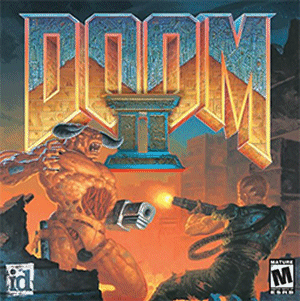
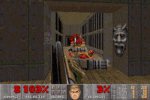 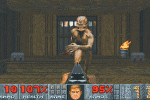
|
Doom II: Hell on Earth is a first-person shooter video game created by id Software. It was originally released on the IBM PC on October 10, 1994. It is the sequel to Doom, which was released a year earlier. In 1993, Doom II won the Origins Award for Best Fantasy or Science Fiction Computer Game of 1994. Unlike Doom which was initially only available through shareware and mail order, Doom II was a commercial release sold in stores. Master Levels for Doom II, an expansion pack that includes twenty one new levels, was released on December 26, 1995 by id Software.
Due to its popularity and success, Doom II has been released for numerous platforms, including the Amiga, Apple Macintosh, Sony PlayStation, Sega Saturn and Nintendo Game Boy Advance. The release of the original Doom source code has facilitated ports to many other platforms, including the Apple iPod, and several types of cellphones.
Doom II was not a dramatically different game from its predecessor. There were no major technological developments, no graphical improvements, and no real changes in fundamental gameplay. The game still consisted of the player negotiating non-linear levels, picking up keys to unlock new areas, and of course shooting down hundreds upon hundreds of monsters. However, due to there being larger and more complicated maps, with larger groups of monsters, the game required higher system specs than the original.
The only new weapon addition was the double-barreled shotgun (named 'Super Shotgun' ingame), which used up two shotgun shells per fire but could fire out 20 pellets instead of the regular shotgun's seven pellets from one shell, making it very useful in dispatching Demons, Cacodemons, and any form of medium-sized monster.
There was also one new item created: the Megasphere, a tan sphere that could give the player 200% armor and health.
The main additions to the game were the additional monsters available for the player to fight. Doom II doubled the amount of non-boss monsters and started using bosses from the original Doom as normal level enemies.
DOWNLOAD
|
DUKE NUKEM
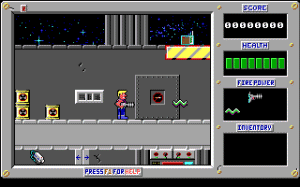
|
Duke Nukem is a platform video game developed and published by Apogee Software (now 3D Realms), featuring the adventures of Duke Nukem. The game was released on July 1, 1991.
The game is set in the year 1997 (which was the "near future" at the time of game release). Dr. Proton is a madman, determined to take over the world with his army of Techbots. Duke Nukem, the eponymous hero, is hired by the CIA to stop him. The first episode takes place in the devastated city of Los Angeles. In the second episode, Duke follows Dr. Proton to his secret moonbase. In the third episode, Dr. Proton escapes into the future, and Duke pursues him through time, to put a permanent end to his mad schemes.
DOWNLOAD
|
DUKE NUKEM II
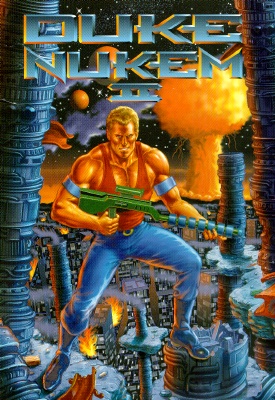
|
Duke Nukem II is an MS-DOS platform game developed by Apogee Software and released December 3, 1993. The game consists of four episodes (of 8 levels each), the first available as shareware. Not to be confused with the second episode of Duke Nukem 1, it is the second Duke Nukem game, following the 1991 Duke Nukem debut and being followed by Duke Nukem 3D in 1996.
Duke Nukem II is everything you'd want from an action game. An incredibly sophisticated game engine gives this high-action game the power needed to 'nuke' your computer! Duke blasts his way through your screen with enough firepower to wake your neighbors.
The original Duke Nukem, released June 1991, soared to the top of the Shareware Top 10 list, where's it's been camped for 22 straight months--no other shareware program (of any type) has been this enduring and popular. But the reason for Duke's extraordinary success is simple: It delivers the action players love, with state-of-the-art animation and graphics. The new Duke Nukem II once again sets the new standard for arcade/action games.
In this latest saga, Duke Nukem, while being interviewed on TV about his best selling book, "Why I'm So Great", is suddenly abducted by aliens. Duke's alien captor explains that Duke's brain will be drained of all his knowledge, which will be used to formulate a master plan to seize control of Earth. Duke has two choices: He can be turned into a zombie by the EncephaloSucker, or 'kick-butt' like there's no tomorrow!
You guessed it! Our hero is ready for action. Duke must escape his alien prison cell, then battle to end the hideous plans of the Rigelatins.
For fans of the original Duke Nukem, all of your favorite touches are still here: soda cans for health, turkey for food, spy cameras watching your every move, boxes you can destroy for bonuses and surprises, and more. Duke still flips, and he walks hand over hand across pipes, chains and ropes, with the new ability of shooting downward while doing so. Duke can also crouch, duck, and shoot upward.
Also, in Duke Nukem II, Duke has four weapons: blaster, laser cannon, missiles, and flame thrower. The flame thrower, when aimed downward, propels Duke upward like a jetpack!
Level objectives yield up to 50,000 bonus points!
DOWNLOAD
|
EPIC PINBALL
EXTREME PINBALL
 
|
Extreme Pinball is basically Epic Pinball with enhanced graphics and sound. The gameplay is so familiar, it is probably using the Epic Pinball engine or an upgraded version of it. That means this game looks, sounds, and feels like a real pinball table. There are 4 tables in this game, with only the first table playable in the shareware version.
Rock Fantasy, Urban Chaos, Monkey Mayhem, Medievil Knights
DOWNLOAD
|
FINAL DOOM
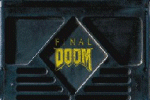 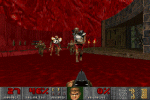
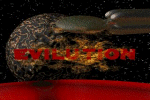 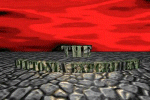
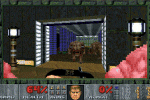 
|
Two New, 32-Level DOOM II Episodes.
TNT:Evilution:
Far from earth, the UAC recommenced their experiments on on of the moons of Jupiter. A spaceship, mistaken for a supply vexxel on radar, hovered above the base. Hideous demons poured out, blanketing the base with death. All your comrades were quickly slaughtered or zombified. This time, it's not about survival. It's about revenge.
The Plutonia Experiment:
Every effort has been made by the nation's top scientists to close the seven interdimensional Gates of Hell, but one portal remains open. Alone, you must infiltrate the ravaged complex, defeat the demon Gatekeeper and seal the last Hell-hole before the undead are prepared to, once again, take over the world.
DOWNLOAD TNT:EVILUTION /
DOWNLOAD PLUTONIA EXPERIMENT
Work on TNT: Evilution was started by TeamTNT, a group of WAD-making hobbyists who were active on the advanced Doom editing mailing list. Just days before it was to be released as a free download online, the project was noted and snapped up by id Software, and finished in November 1995.
Brothers Dario and Milo Casali, who had contributed four levels to TNT: Evilution, were assigned the task of creating what became Plutonia after having sent an 8-level WAD they had created to American McGee and managing to impress him along with the rest of the id Software crew. They created 16 levels each for Plutonia in four months time, and submitted them in January 1996. Unlike their contributions to TNT: Evilution, which were edited after submission (four were also rejected due to being too large to run on the computers of the day). Final Doom is TeamTNT's only commercial product.
|
HERETIC: SHADOW OF THE SERPENT RIDERS
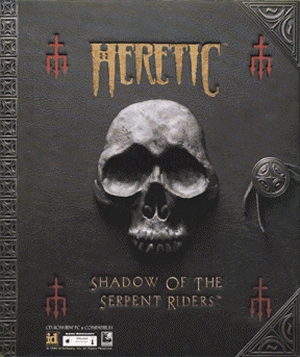
|
Heretic is a fantasy first-person shooter computer game created by Raven Software, published by id Software, and distributed by GT Interactive in 1994.
Using a modified Doom engine, Heretic was one of the first first-person games to feature inventory manipulation and the ability to look up and down. It also introduced multiple gib objects spawned when a character suffered a death by extreme force or heat. Previously, the character would simply crumple into a heap. The game used randomized ambient sounds and noises, such as evil laughter, chains rattling, distantly ringing bells and water dripping in addition to the background music to further enhance the atmosphere. All music in the game was composed by Kevin Schilder.
The original edition of Heretic was only available through shareware registration (i.e. mail order) and contains three episodes. A retail edition, distributed by GT Interactive, was titled Heretic: Shadow of the Serpent Riders and features two additional episodes: The Ossuary, which takes the player to the shattered remains of a world conquered by the Serpent Riders many centuries ago, and The Stagnant Demesne, where the player enters D'Sparil's birthplace. A free content patch was downloadable from Raven's website to update the original Heretic to match Shadow of the Serpent Riders.
The gameplay of Heretic is heavily derived from Doom. While featuring level-based gameplay with an emphases on finding the proper keys to progress, the weapons are also almost exact functional copies of those from Doom, albeit with minor changes. However Raven did add their own touches to Heretic, the most notable of which are items. In Heretic, the player can pick up many different items to use at their discretion. These items range from health potions to the "morph ovum", which transforms enemies into chickens. Heretic also features an improved engine from that of Doom, sporting the ability to look up and down, as well as fly.
DOWNLOAD
|
HEXEN: BEYOND HERETIC
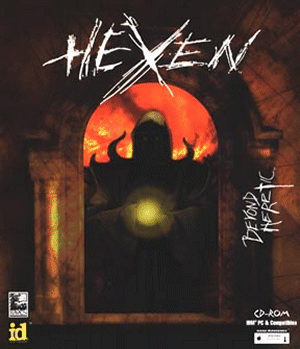
 

 
|
Hexen: Beyond Heretic is a first-person shooter video game developed by Raven Software, published by id Software, and distributed by GT Interactive beginning on March 16, 1996. It is the sequel to 1994's Heretic, and the second game in the Serpent Riders series. The word Hexen is German for "witches".
The game received mostly very positive reviews in computer gaming magazines. There were complaints of the graphics being crude in comparison to the preceding game in the series, Heretic, but vast and well designed levels plus numerous enemies and weapons were seen as advantages.
The score was composed by Kevin Schilder.
A new series feature introduced in Hexen is the choice of character class. Players may choose to play as a fighter, cleric, or mage. Each character has unique weapons and physical characteristics, lending an additional degree of variety and replayability to the gameplay. The fighter relies mainly on melee attacks and is tougher and faster than the other characters. The cleric uses specialized weapons, some of which have limited range or healing effects. The mage uses long-range weapons, whose reach is counterbalanced by dealing relatively little damage and the fact that the mage is the most fragile of the classes.
Hexen introduces the concept of "hub" levels to the series, wherein the player travels back and forth between central hub levels and connected side levels. This is done in order to solve larger-scale puzzles that require a series of items or switches to be thrown. The player must traverse through a hub in order to reach a boss and advance to the next hub.
Hexen uses a modified version of the Doom engine, which allows jumping, network play with up to 8 players and the choice of three character classes. It also popularized the "hub system" of level progression in the genre of first-person shooter games. Unlike previous games, which had relied purely on MIDI for music, Hexen is also able to play tracks from CDs. The game's own CD contained soundtrack in audio format that was exactly the same as the game's MIDI soundtrack but played through a high quality sound module. However, the most significant improvement was the addition of wall translation, rotation and level scripting.
DOWNLOAD
Deathkings of the Dark Citadel is the official expansion pack that was released for Hexen. It features three more hubs, for a total of 20 new single player levels and a couple of deathmatch levels. Unlike the expansion pack for Heretic, it had to be purchased in retail stores or by mail order. This was unusual at the time, as most non-free expansion packs also included other new or revised gameplay elements. Also, this expansion pack did not initially include nor enable any music. Music could be fully enabled by applying a patch, specially released to address this issue (usually found online under the name "dkpatch").
The names of the expansion hubs are as follows:
The Blight
The Constable's Gate
The Nave
Each of the hubs features new levels, one secret level per hub, and new puzzles based on the quest items from the original game (no new quest artifacts were added). The difficulty of the puzzles is mostly on the same level as in the original game. The overall game difficulty is slightly higher, as is typical for game expansions.
The final level of the expansion, the Dark Citadel itself, is an arena-like level, which features teleporting waves of monsters and three bosses (Fighter, Cleric, and Mage clones).
DOWNLOAD DEATHKINGS
|
HOCUS POCUS
|
|
Hocus Pocus is a 1994 side-scrolling platform video game developed by Moonlite Software and published by Apogee Software for MS-DOS. It is a 256 color VGA game featuring 360 degree scrolling and parallaxing backgrounds. A part of this title is distributed under the shareware license.
In the game, the player controls Hocus, a young wizard apprentice, sent on a quest by Terexin, leader of the Council of Wizards to prove his worthiness to join this council. To do this, Hocus has to beat 36 levels spread over 4 episodes, filled with over 30 different kinds of monsters, includings imps, ghosts, and dragons, and a boss at the end of each episode.
Featuring Smooth 360 degree scrolling, with a parallax background.
Over 6MB of 256-color VGA animated graphics.
Four episodes with 36 huge levels!
Over 30 different monsters, plus four huge bosses!
Save/restore options, selectable skill levels, four cheat passwords!
DOWNLOAD
|
IN SEARCH OF DR. RIPTIDE
|
|
In Search of Dr. Riptide is an MS-DOS side-scrolling, action-adventure game that was developed by MindStorm Software and produced by Pack Media in 1994. It is set in the Great Barrier Reef of Australia.
Dr. Riptide is hell-bent on turning all of the world's marine life into high-protein slurry, and must be stopped. Nick, a secret naval agent, must navigate his way through both natural caves and man-carved tunnels in order to find Dr. Riptide.
Nick battles many aquatic creatures including two giant marine life-based monsters, Oscar the giant bionic fish and Otis the giant octopus. On his journey he travels through the chambers and ruins of a Greco-Roman Lost City of Atlantis. All the while, Nick salvages for oxygen, ammunition, weapons and gold coins.
Eventually Nick makes his way deep underwater, under many feet of coral, to the metal-encased laboratories of Dr. Riptide. There he battles the nefarious Doctor, who pilots a large, weapon-equipped submarine. Nick defeats Dr. Riptide, Riptide's submarine breaks down, and Nick tows him away to the authorities.
DOWNLOAD
|
KILOBLASTER
|
|
Kiloblaster was a Space Shooter Video Game Trilogy written by Allen Pilgrim and published by Epic MegaGames in the early 1990s. It was based on the classic Galaxian game, with a few differences such as allowing greater player movement (up and down as well as left and right), much faster enemy movement, power-ups, and so on. It ran under MS-DOS, and took advantage of the still relatively new 256-colour VGA standard, although like Jill of the Jungle before it, a 16-colour EGA mode was also selectable in version 1.0. Running in 256-colour mode would place many obviously computer-generated backgrounds behind the main game levels, something common in games of this era keen to show off their graphical capabilities. The game also had Adlib music (in CMF format) and Sound Blaster sound effects. Allen Pilgrim declared the registered version freeware on August 4, 2008.
DOWNLOAD
|
JAZZ JACKRABBIT
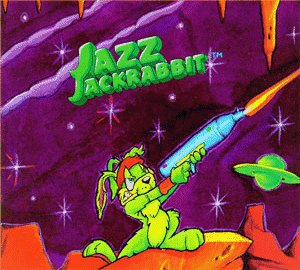
|
Jazz Jackrabbit is a platform game produced by Epic MegaGames. It was released in 1994 for PCs operating DOS.
Jazz Jackrabbit was created by Cliff Bleszinski and Arjan Brussee, and inspired by classic console games such as Super Mario Bros., Mega Man, and especially the fast-paced Sonic the Hedgehog. As a result, its console-style vibrant graphics and speedy gameplay made it somewhat novel as a PC game. PC Format magazine named Jazz Jackrabbit "Arcade Game of the Year", and it was popular enough to spawn two sequels, Jazz Jackrabbit 2 and the Game Boy Advance game Jazz Jackrabbit Advance.
Jazz Jackrabbit is similar in gameplay to the Sonic the Hedgehog games, with some differences. The game features six episodes; each episode consists of three worlds, with two levels and one 3D bonus level (reached by finding a special gem hidden in one of two standard levels) per world, a secret level on each episode hidden in a particular planet and finally a boss level. Unlike Sonic, Jazz has a life bar: when enemies shoot or come in contact with him, he loses health that must be replenished by collecting carrots. If his health falls to zero, Jazz turns to ash and the level restarts from the last checkpoint. Also, instead of jumping on enemies (which would only result in Jazz losing health) Jazz must shoot his enemies with a blue gun he always carries. A variety of different bullet types can be found in the game and do varying amounts of damage.
DOWNLOAD
|
MAGIC CARPET
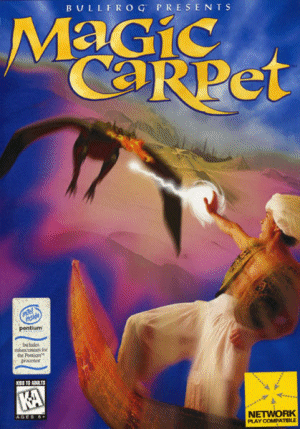
MAGIC CARPET 2
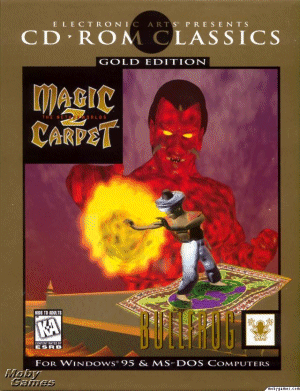
|
Magic Carpet is a video game released by Bullfrog in 1994. Its graphics and gameplay were considered innovative and technically impressive at the time. A revised edition, Magic Carpet Plus, included the Hidden Worlds expansion pack which added 25 levels and a winter-themed tileset. The title also had a sequel released in 1995, Magic Carpet 2. Magic Carpet was considered by fans and critics alike to be a revolutionary game for its time and several aspects of it are still unique today.
The player plays a wizard (on a magic carpet) flying over water, mountains, and other terrain while destroying monsters and rival wizards (which are controlled by the computer) and collecting "mana" which is gathered by hot air balloons and stored in the player's own castle.
The story is told in a cutscene that depicts the pages of a book being flipped. According to this back story, mana was discovered and though it initially had beneficial uses, the quest for it made the lands barren. Worse, many corrupt wizards began turning to mana for their own nefarious purposes, eventually leading to war between them. The battling wizards began using more destructive spells and summoning deadly monsters, the latter of which often turned against them. One wizard hoped to end everything with an all-powerful spell but instead only left the worlds shattered. Only his apprentice survived and his goal is to restore the worlds to equilibrium.
Greater amounts of mana stored in the castle allow the player to cast more powerful spells. As the player expands the castle, it spawns additional mana-collecting balloons and armed guards that defend the castle against attacks by enemy wizards. Besides storing mana, the player's castle also serves as a home base for the player where he cannot be killed and where he can regain health and mana.
Victory is attained by storing in one's castle the necessary percentage of the total mana in the current level (or "world"), restoring it to "equilibrium". The total mana level is fixed in a given world (unless expanded by cheat codes), though it is not in free form and thus must be acquired by killing enemy wizards and monsters. Often, a necessary proportion of mana can only be released by the defeat of a high level wizard or powerful monster.
The magic carpet can be piloted in 3 dimensions, similar to a helicopter, although the player cannot roll and it is impossible to crash.
At the end of the game, after level 50 "Volcania" has been beaten, a cutscene shows the apprentice flying away on his carpet and the book cover closing.
The graphics engine was considered cutting-edge for its time. It included features such as:
A dynamically lighted, gouraud shaded, changeable ("morphable") landscape
Dynamic music that changes whenever the player enters a fight
Scene reflections in the water
Distance fog
Transparency effects, such as the transparent HUD, the water, and the Possess Mana spell when cast.
A particle system, like the mana balls and flocks of vultures and other creatures. Often attacking one member of such a group is enough to attract the attention of the rest of the group.
Player viewpoint control using the mouse.
DOWNLOAD
Magic Carpet 2: The Netherworlds is a 1995 computer game, the sequel to the Magic Carpet. It was developed by Bullfrog and published by Electronic Arts (EA).
The apprentice's master, who died after unleashing his deadly spell, was being spied upon by the Netherworld's ruler, Vissiluth, who is now intent on conquering the world of the living. It's once again up to this apprentice to stop him, by battling this demon.
The NPC wizards are now considered to be Vissiluth's lackeys.
Magic Carpet 2 fixed many of the design complaints present in the first Magic Carpet. The basic concept of the game remains the same as Magic Carpet, with the player being able to build a castle, collect mana, destroy creatures for their mana and battle rival sorcerers.
It featured the addition of night-time levels, and underground levels, which not only helped alleviate the repetitiveness of the preceding game, but also accompanied the storyline progression, which was mapped out before each level. Also unlike its predecessor, the game proceeded by completing various missions such as reaching checkpoints and destroying specific buildings/monsters, rather than just simple accumulation of mana.
The implementation of mid-level saves received mostly a positive response, although some hard-core fans of the first Magic Carpet questioned the need for such a feature, as the difficulty of Magic Carpet 2's levels was generally lower.
DOWNLOAD
|
MICROSOFT FLIGHT SIMULATOR 5.1
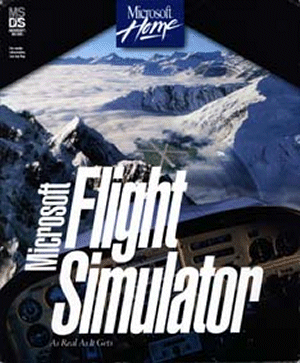
|
Microsoft Flight Simulator (sometimes abbreviated to MSFS or FS) is a flight simulator program for Microsoft Windows, marketed and often seen as a video game.
One of the longest-running, best-known and most comprehensive home flight simulator series, Microsoft Flight Simulator was an early product in the Microsoft portfolio – different from its other software which were largely business-oriented – and is its longest-running franchise, predating Windows by three years.
Bruce Artwick developed the Flight Simulator program beginning in 1977 and his company, subLOGIC sold it for various personal computers. In 1982 Artwick's company licensed to Microsoft a version of Flight Simulator for the IBM PC, which was marketed as Microsoft Flight Simulator 1.00. Former Microsoft CEO Bill Gates was fascinated with Antoine de Saint-Exupéry's book Night Flight, which described the sensations of flying a small aircraft in great detail.[1][citation needed]
FS5 is the first version of the series to use textures. This allowed FS5 to achieve a much higher degree of realism than the previous flat-shaded simulators. This also made all add-on scenery and aircraft for the previous versions obsolete, as they would look out of place.
The bundled scenery was expanded (now including parts of Europe). Improvements were made to the included aircraft models, the weather system's realism and artificial intelligence. The coordinate system introduced in FS1 was revamped.
More noticeable improvements included the use of digital audio for sound effects, custom cockpits for each aircraft (previous versions had one cockpit that was slightly modified to fit various aircraft), and (of course) better graphics.
It took about a year for add-on developers to get grips with the new engine, but when they did they were not only able to release scenery but also tools like Flightshop that made it feasible for users to design new objects.
DOWNLOAD
|
MONUMENTS OF MARS
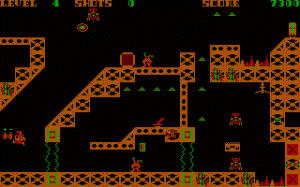
|
Monuments of Mars is a third-person puzzle platform video game developed by Scenario Software and published by Apogee Software. The game consists of four 20 level episodes, the first episode being shareware, the rest being commercial software. It is based on the FAST (Fluid Animation Software Technology) CGA game engine from Arctic Adventure and Pharaoh's Tomb, developed by George Broussard, and later published by Apogee.
In the game, the player controls an astronaut who must navigate through twenty levels on the planet Mars to finish the game. Most levels require the player to enter a door to advance to the next level, but earlier levels have the player simply move to the opposite side of the screen. The player has the capability to jump and shoot with a gun. This is useful to operate switches which open doors or turn off obstacles. A unique point to this game is that the player has no limit of lives. A player may restart a level as many times as necessary. If a player can collect the letters in the word "MARS" scattered throughout the level in order, a large bonus is added to the player's score.
The game was discontinued, and is no longer sold by Apogee.
DOWNLOAD
|
MYSTIC TOWERS
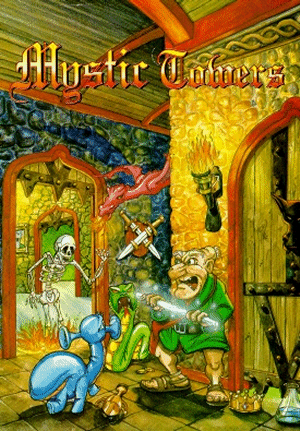
|
Mystic Towers is a computer game released in Jul 15, 1994 and created by Australian developer Animation F/X and published by Manaccom domestically and Apogee Software internationally. It stars Baron Baldric, a geriatric wizard with a magic walking stick and an array of amusing mannerisms, who must quest through twelve towers and rid them of monsters. Mystic Towers is a sequel to Baron Baldric: A Grave Overture, a platform game in which Baron Baldric battled an evil sorcerous ancestor. The earlier game, originally written for the Amiga and later ported to the PC, was published by Manaccom and not released outside of Australia.
Baron Baldric begins his quest at the entrance of the tower. He must move throughout each of the five floors of the tower, destroy all monsters and the monster generator; after which he will be awarded with the red tower key that can be used to exit the tower in the same way he came in.
Baron Baldric has three "life" bars that must be watched over the course of gameplay: a health bar, a food bar, and a drink bar. The health bar shows Baldric's hit points, which decrease as Baron takes damage from monsters, is poisoned, or steps on traps. Once the food meter or drink meter empties, the Baron begins to lose health. When his health meter runs out, Baron loses a life (he begins with nine in reserve, but when these are gone and he dies again, it's Game Over [or, as the game puts it, "Dead End" - the joke being that Baldric is dead]).
The food and drink bars show Baron's hunger and thirst, and they slowly decrease over the course of gameplay. Along his quest, Baldic must consume enough food and drink to avoid starvation and thirst. If at any time, one or more of these two bars run out, Baron Baldric will slowly lose life until food or drink is consumed, and neither meters are empty.
Food can be found in a variety of places, and some monsters will drop them when killed. Drinks can be found in bottles and flasks, as well as in water fountains in towers. Note that some bottles contain wine, which will make Baron Baldric tipsy (characterized by spinning and hiccupping) for a short while).
Coins can be collected to purchase spells. The higher the floor of the tower in which a spell is purchased, the more powerful the spell generally is. Note that spell "vending machines" may break after a few uses.
Treasure can also be collected to increase the player's points.
DOWNLOAD
|
NEED FOR SPEED, THE
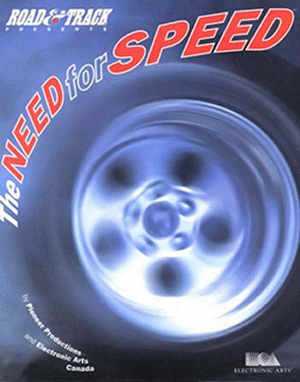
|
The Need for Speed (occasionally referred to in full as Road & Track Presents: The Need for Speed) is a 1994 racing video game, developed by Electronic Arts Canada and published by Electronic Arts. It is the first in the Need for Speed series, which spans more than 15 titles to date. The premise of the game involves racing in sport cars, including several exotic models and Japanese imports. The game was noted for its realism and audio and video commentaries. Electronic Arts teamed up with automotive magazine Road & Track to match vehicle behavior, including the mimicking of the sounds made by the vehicles' gear control levers. The game also contained precise vehicle data with spoken commentary, several "magazine style" images of each car interior and exterior and even short video clips highlighting the vehicles set to music.
DOWNLOAD
Featured both closed circuits and three point-to-point tracks, each divided into three stages. For the latter, traffic vehicles appeared in races.
Included police pursuits, in which the player could be ticketed or arrested after a police car succeeded in catching up with the player. The player was arrested if he/she received a third police ticket, while the Sega Saturn version only required two tickets for the player to be arrested.
Featured detailed specifications, history, audio commentaries and real-life videos of each vehicle.
Featured data and records of each race, during and after the race. These included speed, track records and racer position.
Replay feature allowed the player to view a saved race. Multiple camera views, playback speed and video navigation were offered.
A special feature for finishing the tournament's (or entering the cheat) was "rally" mode. This highly popular very fun mode rivaled Sega Rally in its driving dynamics. The car dynamics changed to make for faster arcade experience. Rally mode was in the original PC DOS based version, however it was completely rewritten in the PC Special Edition and Playstation version. This update included new graphics that made the tracks look like dirt.
|
NITEMARE 3-D

  
|
Nitemare 3D (N3D) is a first-person shooter PC game with a horror theme, released by Gray Design Associates in June 1994 on DOS and Windows 3.x platforms. It consisted of three episodes, the first of which was released as a demo. The full release came on two 3½" floppy disks and was accompanied by a guide to the game's thirty levels.
Graphics were very similar to those used in id Software's Wolfenstein 3D games, with perpendicular walls, and no texture on the floors or ceilings. The object of the game was to free the player's girlfriend Penelope from the house of the evil Dr. Hamerstein.
Running into trouble in the underground prison.N3D followed the story of Hugo, from the Hugo Trilogy, a series of graphic adventures consisting of Hugo's House of Horrors, Whodunit? and Jungle of Doom. Hugo's girlfriend Penelope has been kidnapped by the evil Dr. Hamerstein for use in heinous experiments. The player must battle through Hamerstein's bizarre mansion, underground caverns complete with prisons and laboratories, and finally through a twisted alternate dimension of demons and aliens in an attempt to save her.
back when i was in my own little world of dos gaming, i had actually enjoyed this game better than doom and its a shame it never lived up to the credit it deserved, other than shareware of the year. it has the first person paranoia of doom but will take a lot longer to beat due to puzzles.
DOWNLOAD
|
ONE MUST FALL 2097
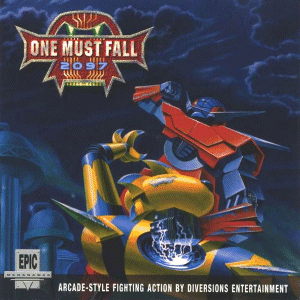
|
One Must Fall: 2097 is a fighting game for the IBM PC compatible, programmed by Diversions Entertainment.
Released in 1994 by Epic MegaGames, One Must Fall: 2097 replaces the human combatants typical of contemporary fighter video games with large Human Assisted Robots (HAR). These HARs are piloted through a physical and mental link to the human pilots; however, this is merely a plot concept, and it is never shown on-screen, nor does it factor in to gameplay. Eleven HARs and ten customizable pilots are available for play, along with five arenas and four tournaments. The pilots vary in strength, speed and endurance, thus the many HAR/pilot combinations allow for large replay value.
Unlike in most fighting games of its time, the arenas (except one, the Stadium) contain hazards. For instance, one arena features spikes coming out of the wall that can damage your robot, and one has a floating sphere that, when struck, triggers a fireball from the floor under your opponent.
The game has two main play modes: One-Player Mode, in which the company that markets the robots, World Aeronautics and Robotics (WAR), is holding a competition among its employees to decide who will be selected to oversee the establishment of the first Earth base on Jupiter's moon, Ganymede. The second mode is Tournament Mode, set three years after the first tournament, where HAR battles have become the premier source of entertainment for Earth and you, a new competitor, must win prize money to improve your machine and ultimately become the World Champion.
The game was later patched to include multiplayer support. On February 10, 1999, the game was declared freeware by the developers.
ONE MUST FALL (1992)
ONE MUST FALL 2097 (1994)
|
OPERATION BODY COUNT
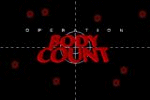 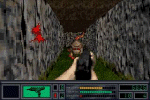
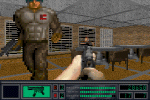 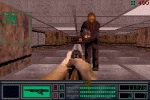
|
Operation Body Count is a 1994 first-person shooter that used the Wolfenstein 3D ray casting engine. It was developed and published by Capstone Software.
Terrorists have taken over the UN Building and have seized the government officials in the building. They are now being held as hostages in the top floor of the building by Victor, the leader of the terrorist gang.
As a member of a special Government Assault Team, it is up to the player to command their team and reach the top floor (the 40th level), rescue the hostages and eliminate the terrorist threat by killing Victor with extreme prejudice.
Using a modified Wolfenstein 3D engine, gameplay is very similar to the majority of other "clones" of the time. The game consisted of 40 levels. The first few levels are set in the sewers, where you attempt to make your way up to the basement of the building. During these levels, you mainly combat giant rats, as well as sewer monsters.
Upon getting into the UNN building, you then combat the terrorists. When you make it up to level 40, you come face-to-face with Victor himself. Armed with a semi-automatic shotgun which he isn't afraid to use, and brandishing black sunnies and a dark trench coat, Victor isn't going to go down without a fight.
DOWNLOAD
|
QUAKE
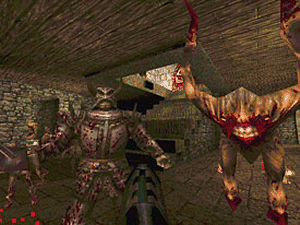
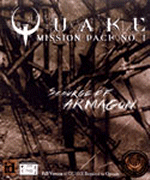 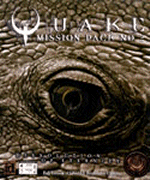
|
Quake is a first-person shooter computer game that was released by id Software on June 22, 1996. It was the first game in the popular Quake series of computer and video games.
Quake was released just as the Internet was commercially coming of age, and much of its popularity arose because it was one of the few games of its kind playable over the internet rather than just a local network.
Quake and its four sequels, Quake II, Quake III Arena, Quake 4, and Enemy Territory: Quake Wars have sold over 4 million copies combined. In 2002, a version of Quake was produced for mobile phones. A copy of Quake was also sold in 2001, labeled Ultimate Quake, which included the original Quake, Quake II, and Quake III Arena.
In 2008 Quake was honored at the 59th Annual Technology & Engineering Emmy Awards for advancing the art form of user modifiable games. John Carmack accepted the award.
DOWNLOAD
QUAKE
Mission Pack 1: Source of Armagon
After defeating Shub-Niggurath, you arrive back at your home base on Earth, but it's not all blue skies and butterflies. Apparently, not all QUAKE forces have been subdued. Chaos ensues as you blast your way through the QUAKE minions and toward the infested gateway. Your only choice is to find the source of evil and shut it down. Without any hesitation, and with more guts than common sense, you leap into a portal of unknown destination.
DOWNLOAD MISSION PACK 1
QUAKE
Mission Pack 2: Dissolution of Eternity
TWO NEW EPISODES. SIXTEEN NEW LEVELS. ONE WAY OUT.
Your journey has led you down a path of no return. The acrid smell of death fills the air. And you know the road ahead may lead to your grave. But Quake, with his insidious, apocalyptic plans, must be crushed. If you fail, evil will shroud the universe for all eternity.
DOWNLOAD MISSION PACK 2
|
QUARANTINE
RAPTOR: CALL OF THE SHADOWS

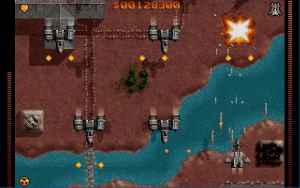
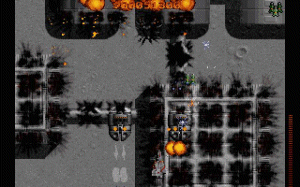
|
Raptor: Call of the Shadows (often Raptor for short) is a 2D raster graphics vertical scrolling shoot 'em up single player game for the x86 PC written for MS-DOS, by Cygnus Studios (which has since changed its name to Mountain King Studios). It was published by Apogee Software on April 1, 1994. In 1999, Mountain King Studios re-released Raptor as a native Windows program. The Windows version of Raptor is not distributed by Apogee Software.
There is a shareware version available for both versions of this game which includes the first sector, the Bravo Sector. The full version can still be bought online today. Apogee sells only the DOS version while Mountain King Studios sells only the Windows version. If purchased, a download of the full version will be provided. Raptor is no longer available for purchase as a standalone physical product.
The story of the game indicates that "In the future as a mercenary flying the super-tech Raptor, you'll be sent on interplanetary missions to knock off top competitors of MegaCorps."
The Raptor jet fighter appears to be combination of the Eurofighter Typhoon (notably the delta wings and canards) and the F-15 Eagle (the fuselage and twin tail fins).
The game is divided into three "sectors": Bravo Sector, Tango Sector, and Outer Regions, all of which have nine sub-missions called "waves", making for a total of 27 levels. The full version of Raptor allows players to start out in any of the three campaigns, though playing them in order will help the player to more easily accumulate money for weapon and shield upgrades.
The first episode, the Bravo Sector, is the most "generic" one, with few features distinguishing each level. Starting at the coast and then moving inland, most of the targets are military bases and various industrial installations, and much of the terrain is barren land, with the occasional forests and rivers. The environment suggests that it is located in the Middle East, as large oil silos feature prominently in the early waves, while in wave eight near the end there is a petrochemical processing plant. In the final wave, the player flies offshore to ruin the Lithos Petroleum rig. However, there is no background on why Lithos is the enemy, other than being suggested as a competitor of MegaCorps.
Raptor gameplay, Wave 4 of Bravo Sector.The second episode, the Tango Sector, is more distinctive, with each level following one of several specific themes. These include a large water/chemical plant, farmland, jungle, city, and airbase. At the end, in the jungle after destroying an ancient temple, the player has to defeat a huge aircraft which splits into three modules. In the final episode, Outer Regions, the player travels from different planets; they consist of a lunar body, a red planet similar to Mars, an ice world, a volcanic world, and finally a space station. Tango Sector and Outer Regions each have a special "night wave" with its own theme music. The night level in the Tango Sector is a well-illuminated city, while the Outer Regions' is the "dark side" of the moon.
Once a player beats a Sector, they can replay it with all the money and weapons that they have accumulated.
DOWNLOAD
|
RISE OF THE TRIAD

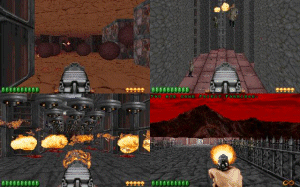
 
|
Rise of the Triad: Dark War is a first-person shooter video game that was first released on February 17, 1995 and developed by Apogee Software (now known as 3D Realms). The members of the development team involved referred to themselves as "The Developers of Incredible Power." The shareware version, which contains ten original levels, is titled Rise of the Triad: The HUNT Begins. The player can choose one of five different characters to play as, each bearing unique attributes such as height, speed, and endurance.
The engine is an enhanced variant of the Wolfenstein 3D engine. The level design is chiefly characterized by 90 degree walls and unvarying floor and ceiling heights in individual maps, limitations that are the sole vestiges of the original Wolfenstein 3D engine. However, ROTT's engine was still the first to pioneer a myriad of features which would be found in many later games, such as panoramic skies, simulated dynamic lighting, fog, bullet holes, level-over-level environments (made possible by "gravitational anomaly disks"; suspended objects that collectively form stairs, floors, etc.), and more.
"Like DOOM, Rise of the Triad is a high quality, fast scrolling first-person perspective 3D action game. Graphics are on par with DOOM. It has destructive enemies and lots of them, an arsenal of weapons from simple pistols to missile launchers, life-preserving armor, traps and ambushes galore, and the ability to play by modem or network. In all, there's a great degree of similarity between the two games. In addition, Rise of the Triad puts most of the other DOOM wannabes to shame - it's that good!".
Rise of the Triad won the 1995 Shareware Industry Award in the category of Best Action/Arcade Game, beating out other titles such as Descent and Heretic.
DOWNLOAD
|
SILVERBALL
SOLAR WINDS
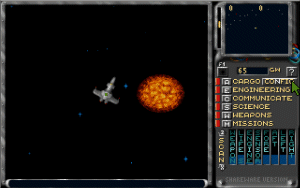
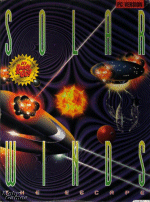 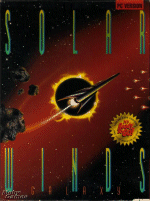
|
Published by Epic MegaGames, Inc.
Developed by Epic MegaGames, Inc.
Released 1993 Platform DOS
Solar Winds I & II were top down, space-based action games released in the early-1990s.
In Solar Winds, you are Jake Stone, a bounty hunter who - through several missions - uncovers a secret coalition between the government of your home solar system and a race of unidentified aliens. Upon further investigation, you find out that, in fact, there is more than one solar system involved... And what is really happening is that three easily-provoked races are being held by a more technologically advanced race in a small cluster of solar systems, and kept there by a force field around them. Hyperdrive technology has been sabotaged, and the 'keys' - jump points between solar systems - kept secret.
SOLAR WINDS:THE ESCAPE
In the second game, Solar Winds II, you are Jake Stone, again, and now you are in a zoo. Seven systems have been set up by members of the same race that rescued you and each system contains a species. They are monitored and pushed and prodded, and through a series of jobs that take you from one system to another you are contacted by the same resistors that rescued you previously. They help smuggle you outside of the barriers where you destroy the controller and free all the captive races.
SOLAR WINDS: GALAXY
Sequel to Solar Winds: The Escape, you play the role of Jake Stone, a bounty hunter seeking to save his people from destruction.
After being lead into a death trap by your Government, you managed to escape your solar system with the aid of a strange portal. Upon arriving at your destination, you were left waiting for a contact that would help you return home. Now, a year later, the time has come...
You will travel around the galaxy accepting missions in exchange for machinery to upgrade your ship, meeting many beings eager to help or destroy you. It's up to you to determine who you can trust.
|
WOLFENSTEIN 3-D
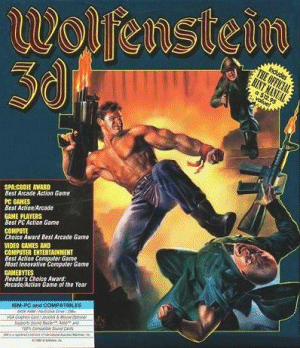
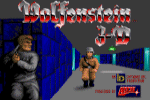 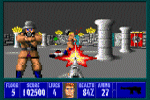
|
Wolfenstein 3D is a video game that is generally regarded as having popularized the first person shooter genre on the PC. It was created by id Software and published by Apogee Software. Released on May 5, 1992 for MS-DOS, the game was inspired by the 1980s Muse Software computer games Castle Wolfenstein and Beyond Castle Wolfenstein. It has been ported to a wide variety of systems, including 3DO, Super NES, Game Boy Advance, Acorn Archimedes, Atari Jaguar, and the Apple IIGS.
In Wolfenstein 3D, the protagonist is an American soldier (Polish descent) named William "B.J." Blazkowicz attempting to escape from the titular Nazi stronghold; there are many armed guards, as well as attack dogs. The building has a number of hidden rooms containing various treasures, food supplies, and medical kits, as well as three different guns and ammunition.
Wolfenstein 3D was released as shareware, which allowed it to be copied widely. The shareware release contains one episode, consisting of 10 missions (levels). The commercial release consists of three episodes including the shareware episode, and a mission pack called "The Nocturnal Missions". Like the shareware episode, each commercial episode contains 10 levels, bringing the game to a total of 60 missions.
The first three episodes of the game focus on the character of William "B.J." Blazkowicz's attempts to escape from Castle Wolfenstein and overthrow the Nazi regime.
The Nocturnal Missions form a prequel storyline, focusing on the Germans' plans for chemical warfare (Giftkrieg). A Dark Secret deals with the initial pursuit of the scientist responsible for the development of the weaponry; B.J.'s task is to enter the weapons research facility and hunt down Dr. Otto Giftmacher (Poison Maker).
Trail of the Madman is a rather ornate episode taking place in clean and stylish Castle Erlangen. Ostensibly, the episode's goal is to find the maps and plans of the chemical war, guarded by Gretel Grosse (Hans' sister). Hitler's image appears throughout this episode, as posters and wall mosaics, symbolizing his imminent rise to power. All levels are designed with fashion, much decoration, and opulence.
The story comes to a close in Confrontation, set in Castle Offenbach; a summation of everything that has gone before, including the mutants (in the secret level only), Hans Grosse (in the secret level only), and the overall "feel". The final battle is fought between B.J. and the leader of this war, General Fettgesicht (Fat Face).
DOWNLOAD 6 Episodes
|
WOLFENSTEIN: SPEAR OF DESTINY
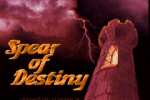 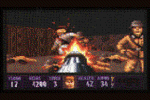
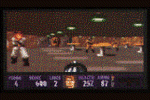 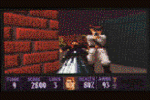
|
It's World War II and you are B.J. Blazkowicz, the Allies' most valuable agent. In the midst of the German Blitzkrieg, the Spear that pierced the side of Christ is taken from Versailles by the Nazis and secured in the impregnable Castle Wolfenstein. According to legend, no man can be defeated when he has the Spear. Hitler believes himself to be invincible with the power of the Spear as his brutal army sweeps across Europe. Your mission is to infiltrate the heavily guarded Nazi stronghold and recapture the Spear from an already unbalanced Hitler. The loss of his most coveted weapon could push him over the edge. It could also get you ripped to pieces.
The game consists of one 21-level episode, 18 of which need to be completed in order to win the game; graphics, gameplay, etc., are very similar to those of Wolfenstein 3D. The game's levels can be divided into four blocks ("Tunnels", "Dungeons", "Castle", and "Ramparts"), each ending with the player having to defeat a "boss" in the final level.
DOWNLOAD
To play, you must answer questions, here are answers
|
WOLFENSTEIN: SPEAR OF DESTINY LOST LEVELS (RARE)
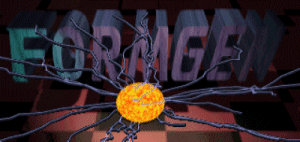
|
Two further missions for Spear of Destiny, titled "Return to Danger" and "Ultimate Challenge" were also created and published by FormGen Corporation in May 1994; these are collectively known as the "lost episodes", due to the fact that their existence is not widely known. Each of these, too, consists of 21 levels, with a layout similar to that detailed above; they introduced some new graphics to Spear of Destiny, but are otherwise mostly a collection of more levels for the game. A CD version containing all three episodes, titled the "Spear of Destiny Super CD Package", was also released in late 1994. The Steam release includes the lost episodes.
The bosses in both packs are Submarine Willy, Professor Quarkblitz, Major Hans "the Axe" von Schlieffen, Robot Sentry, and Death Incarnate.
DOWNLOAD
|
|

